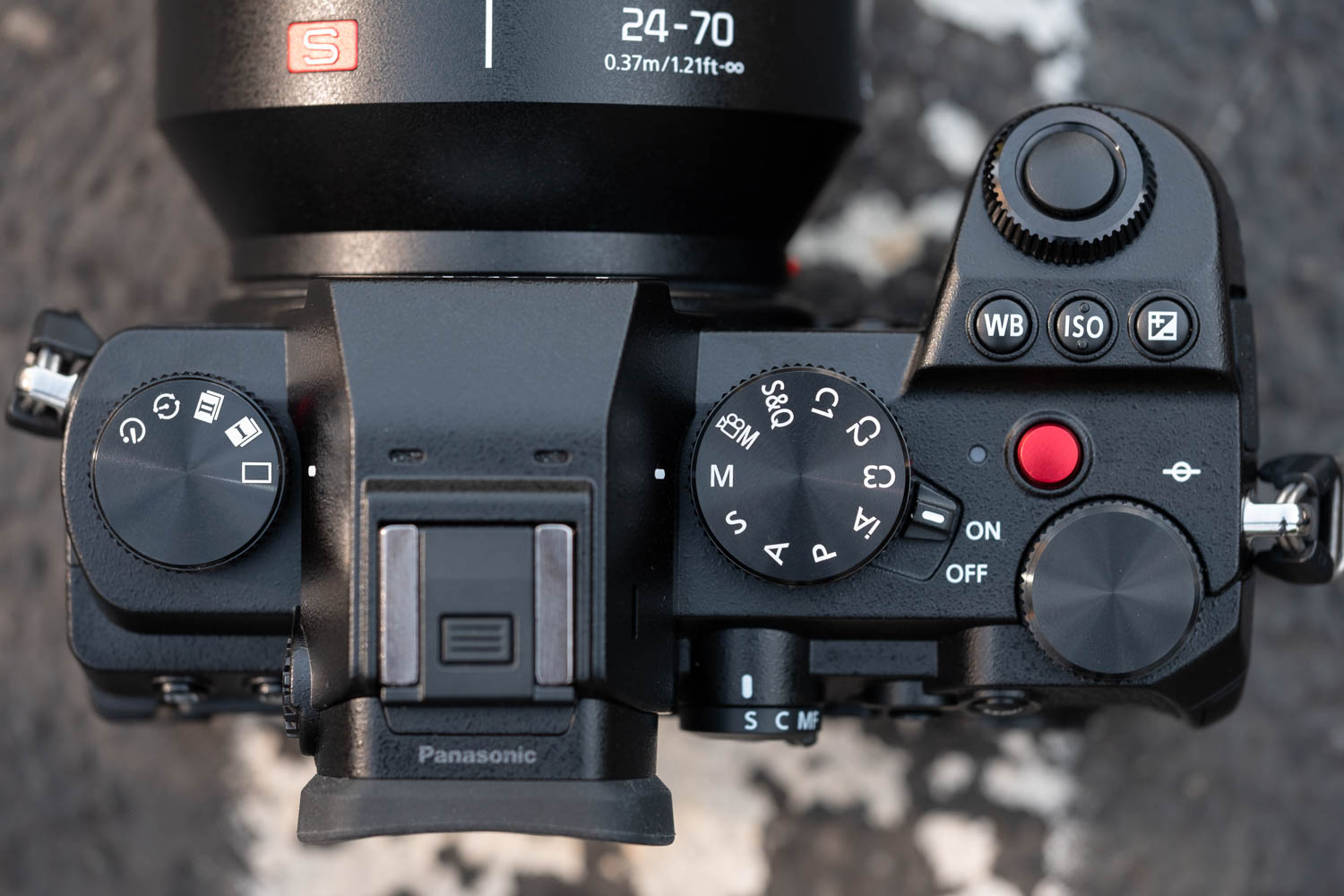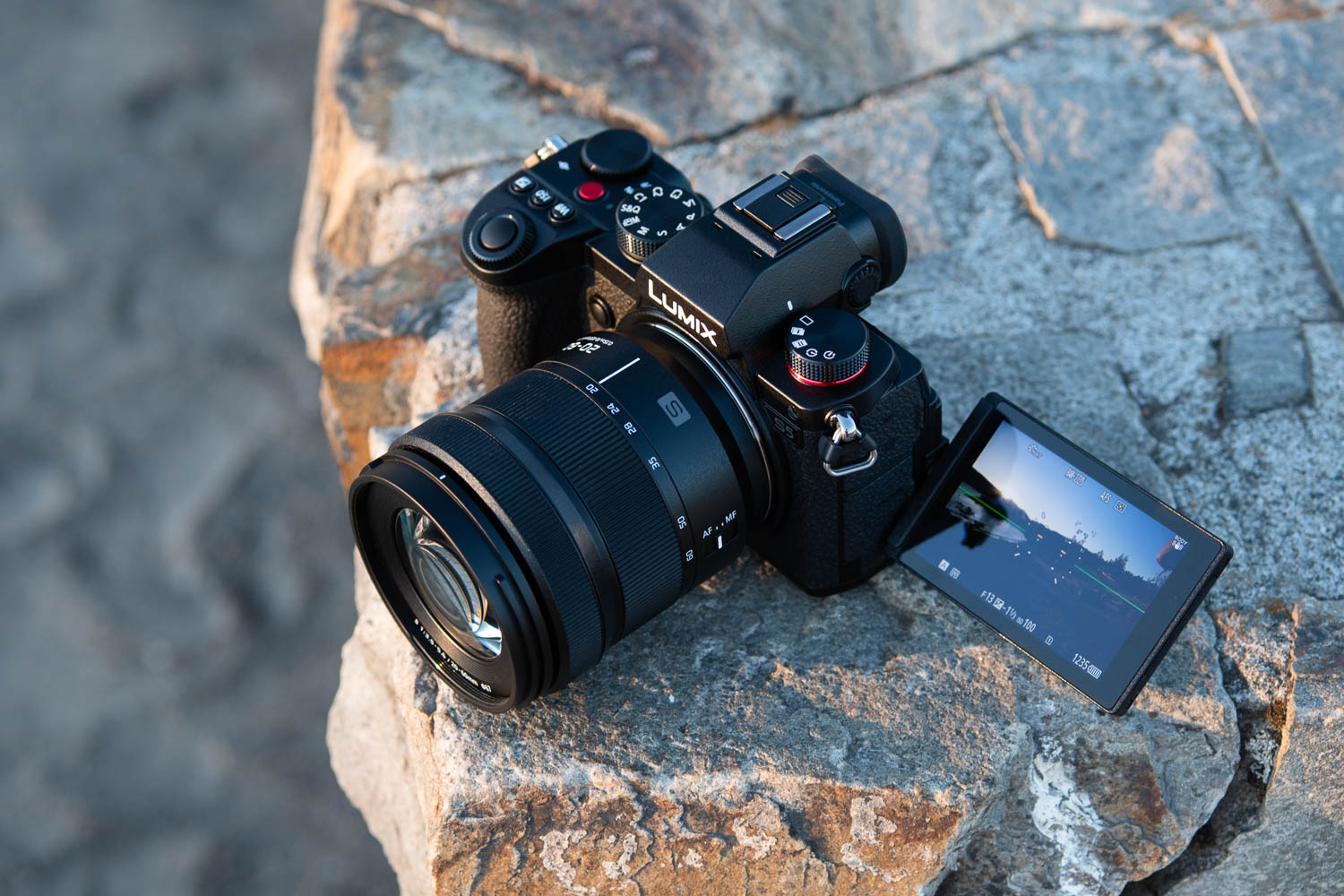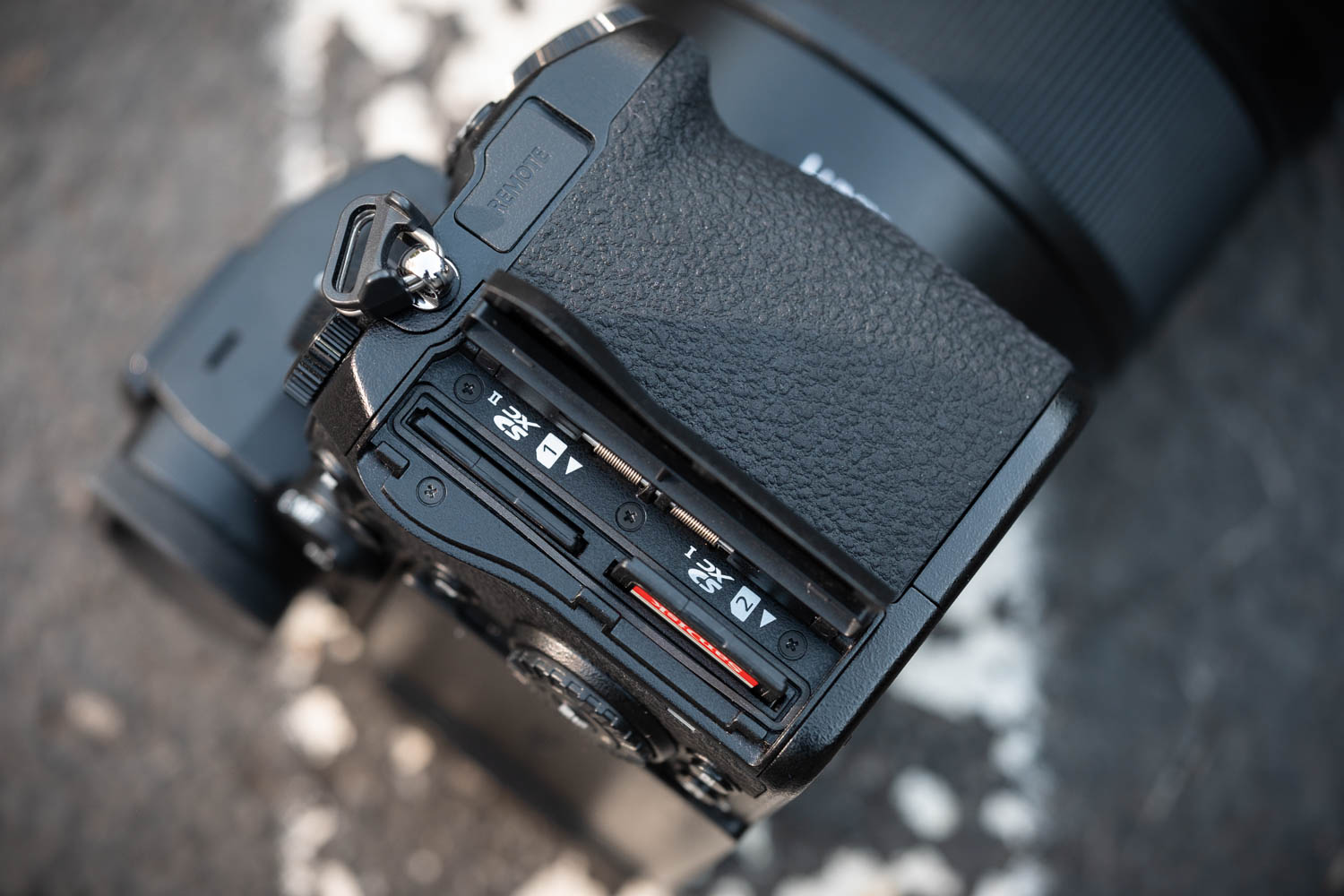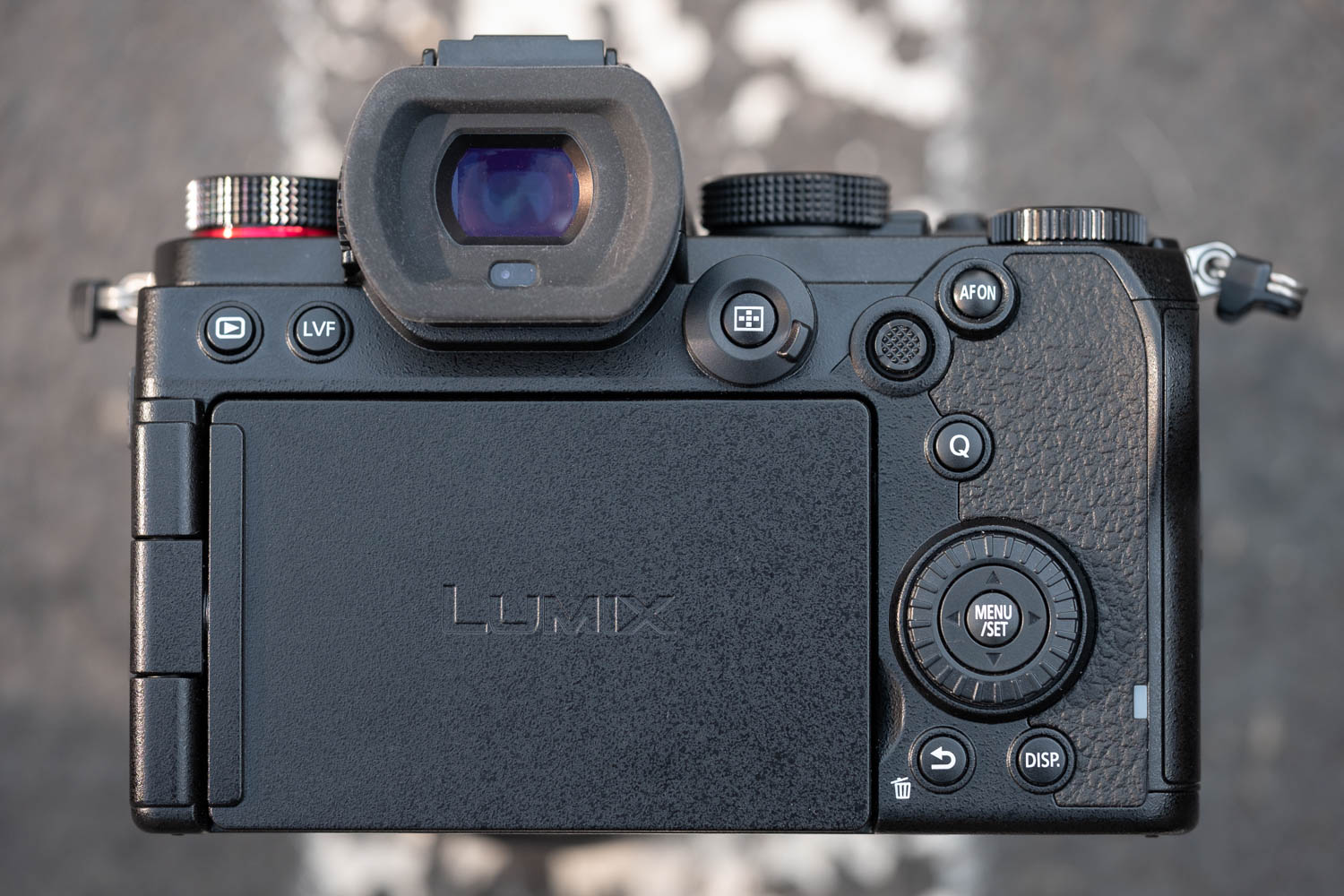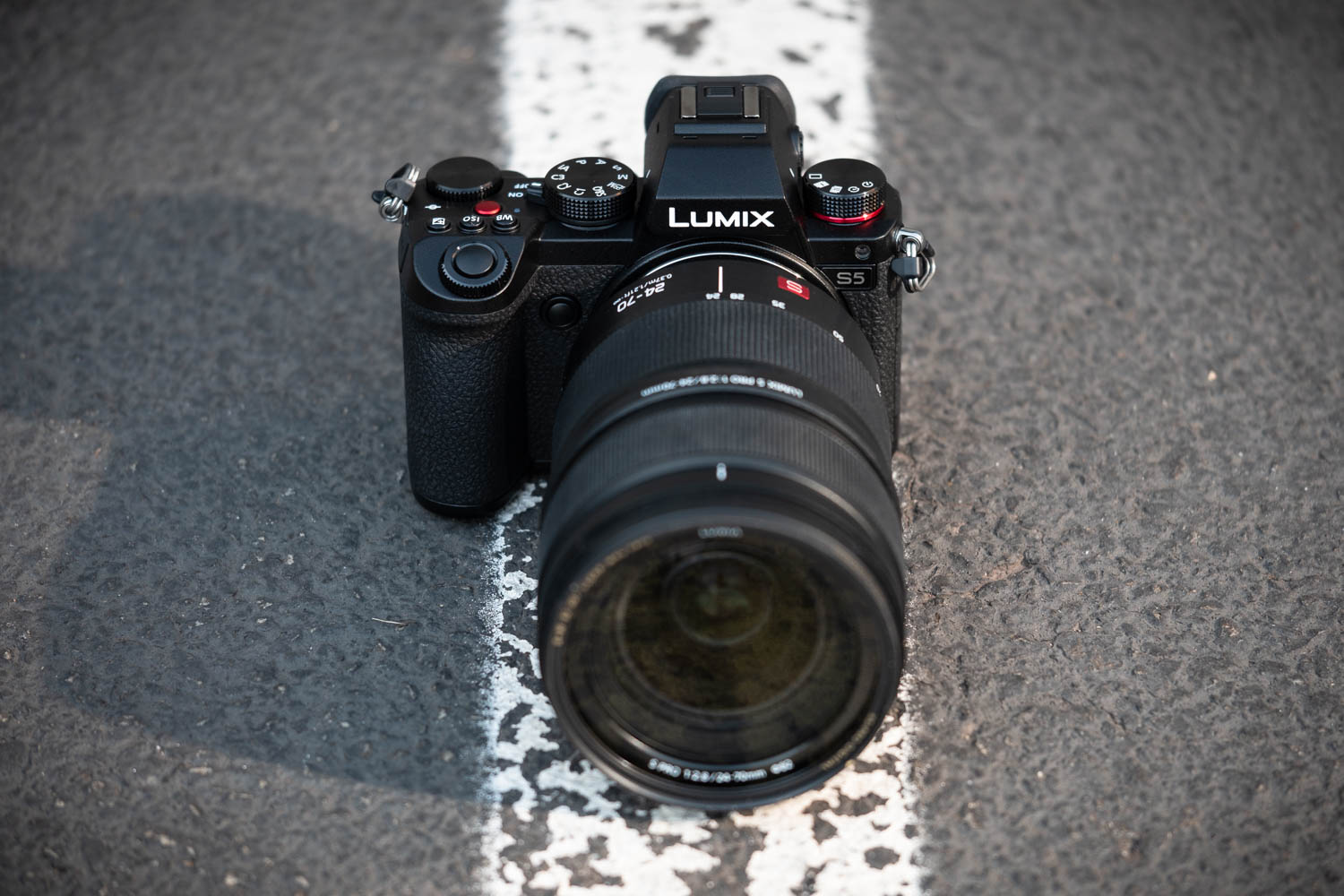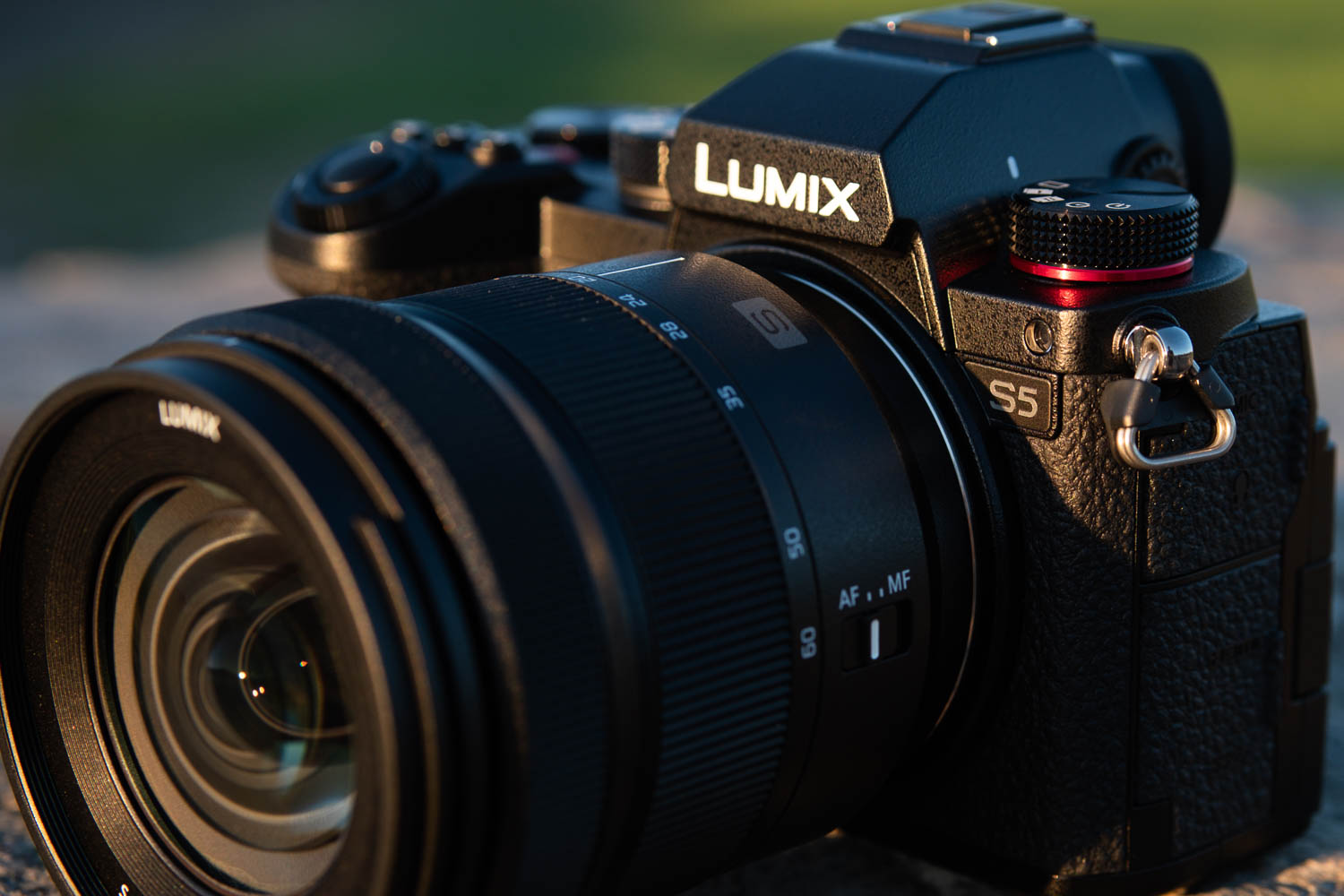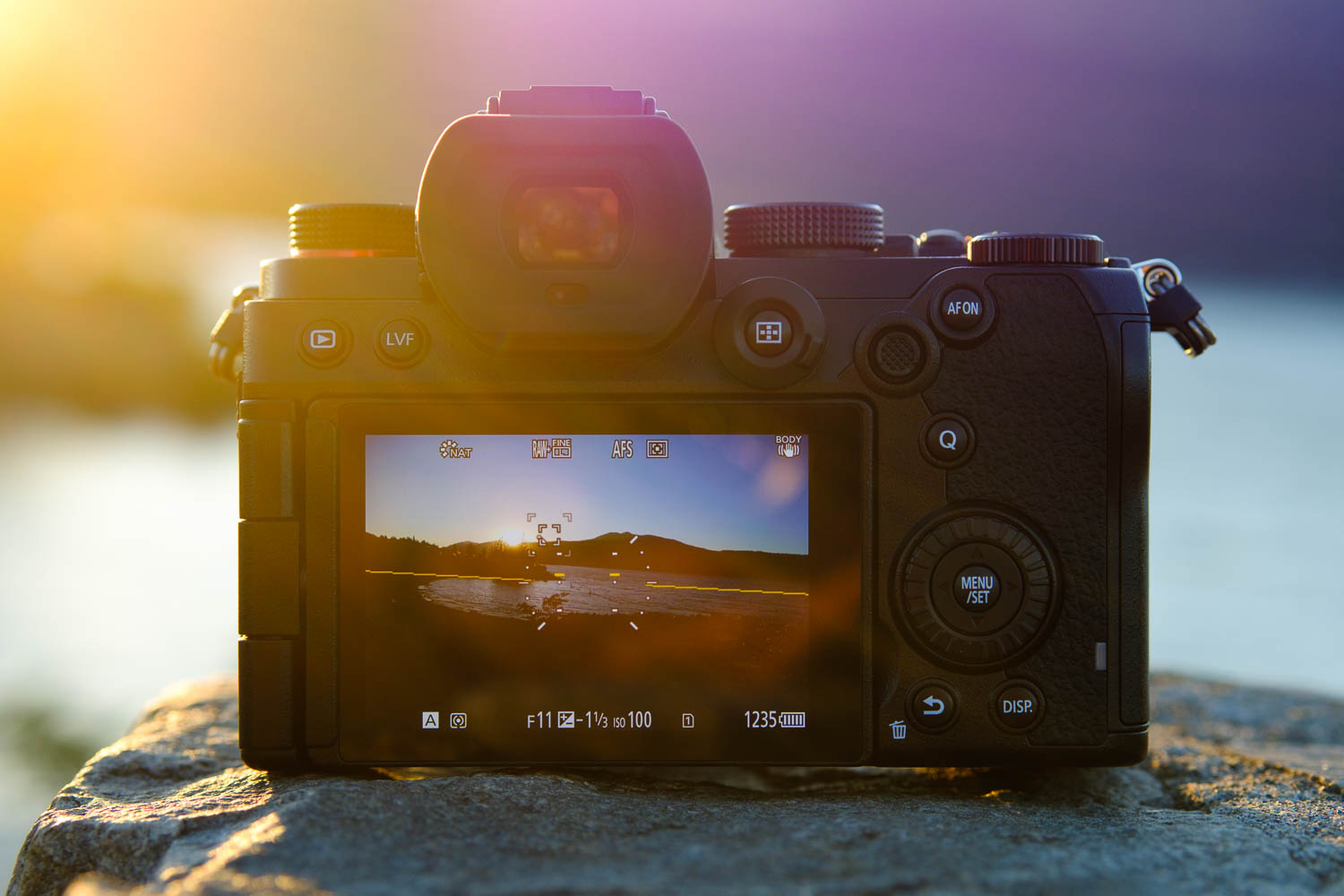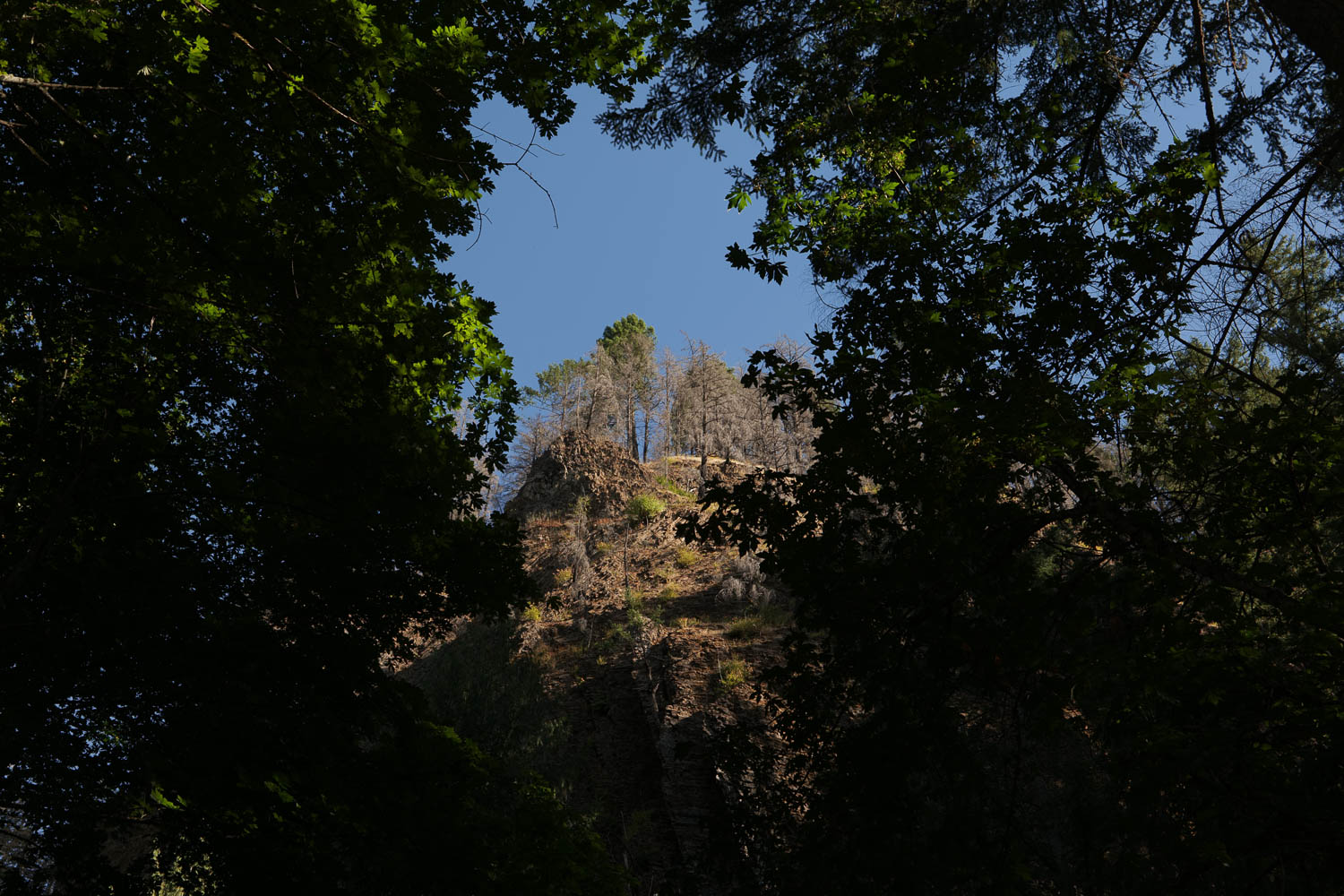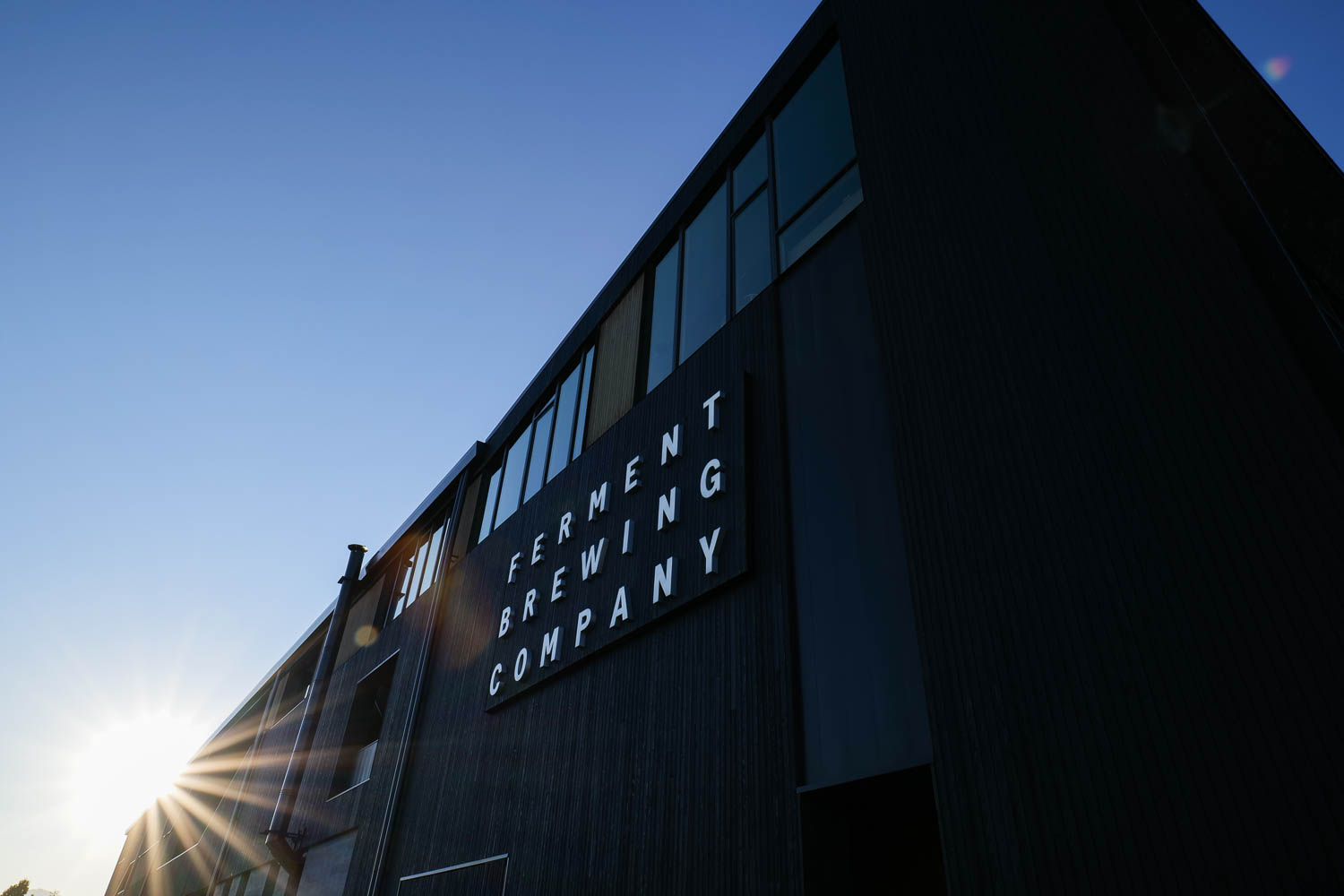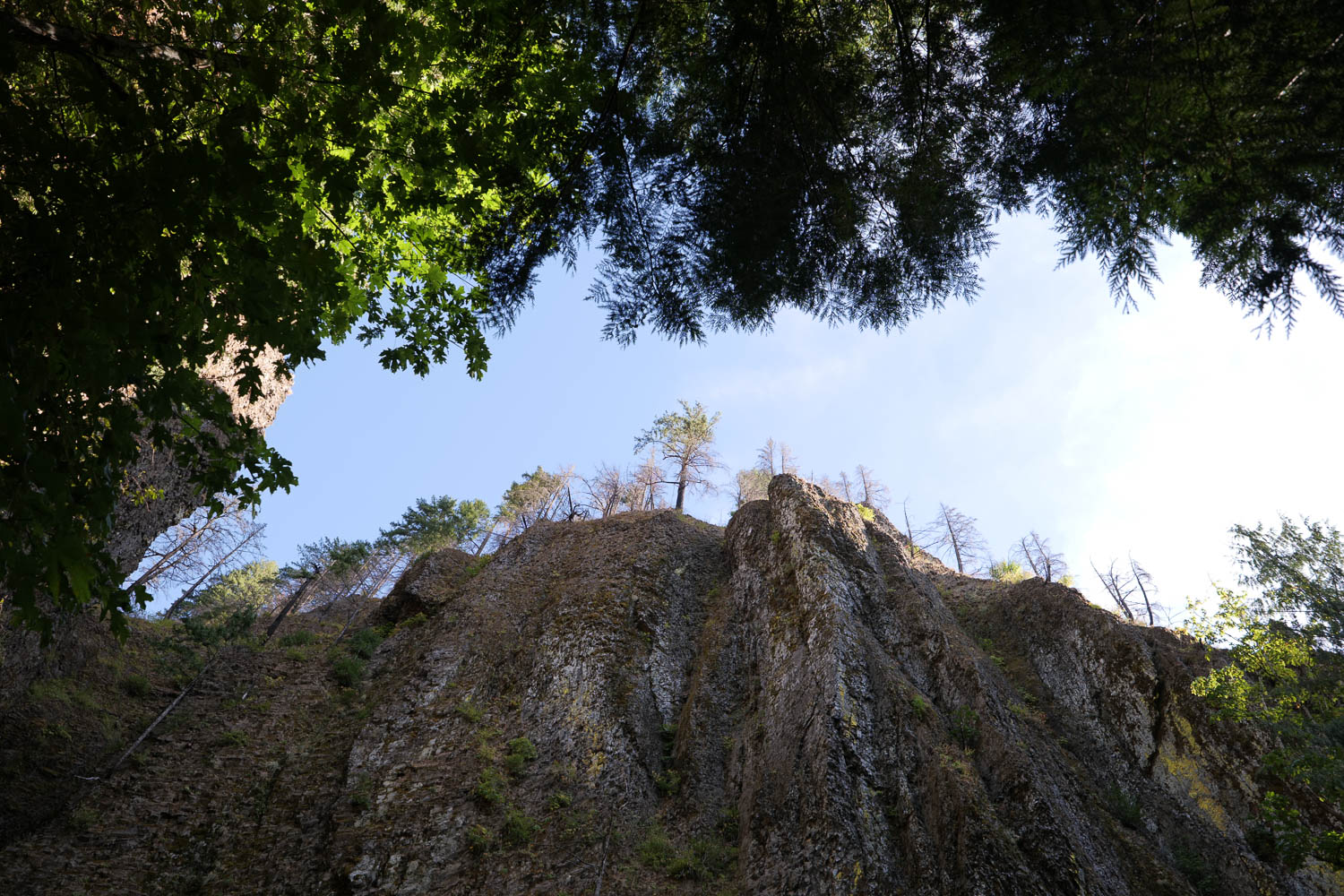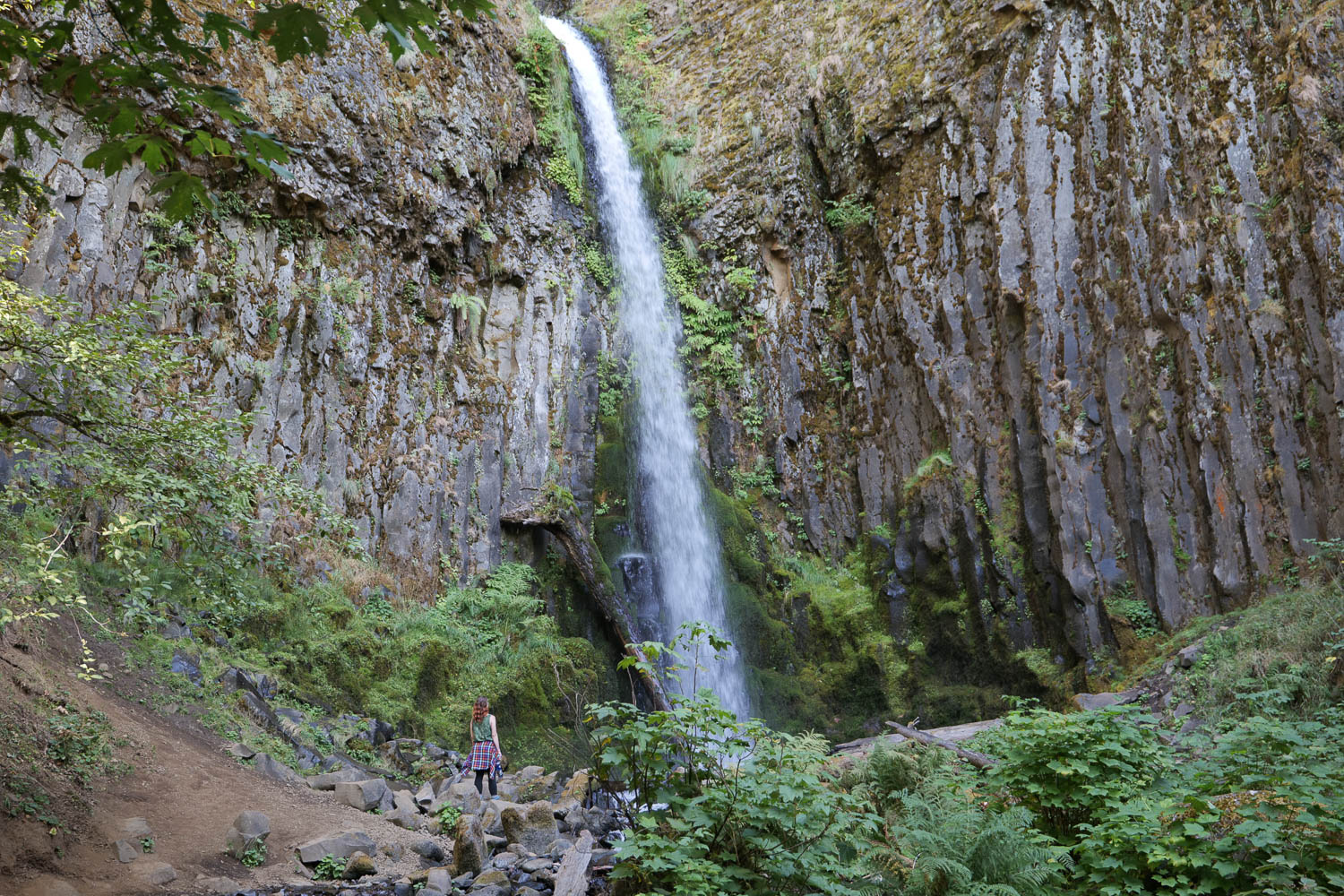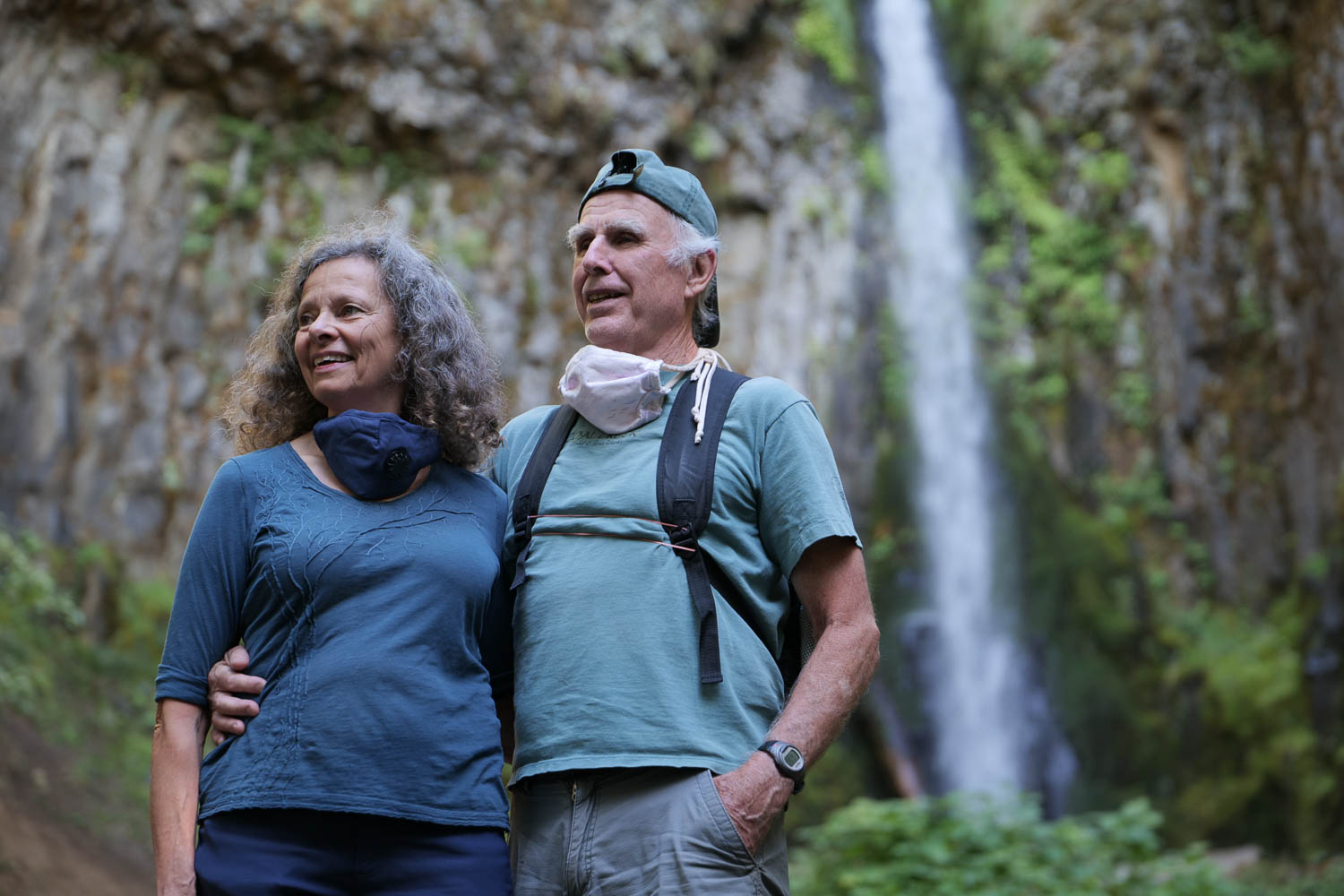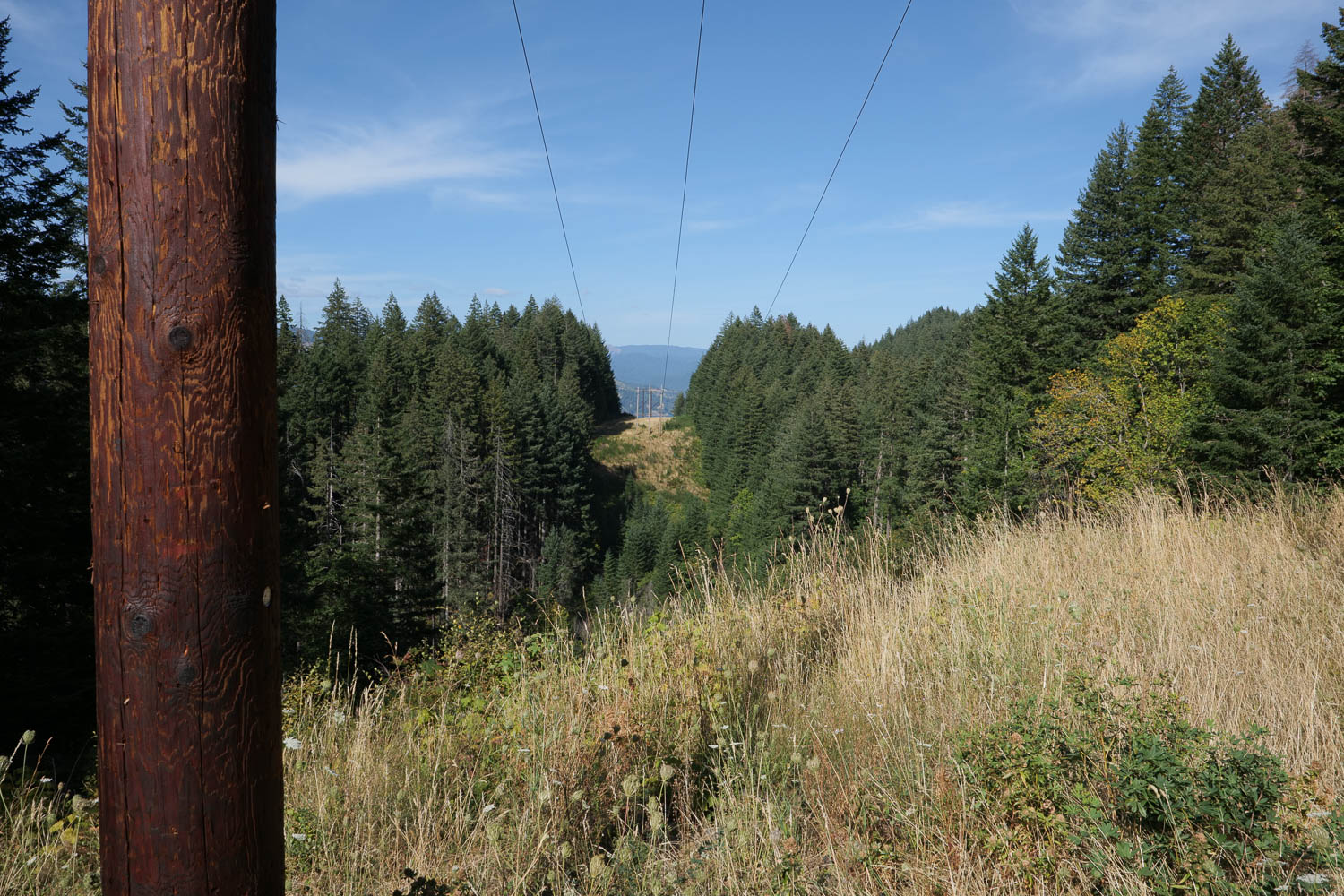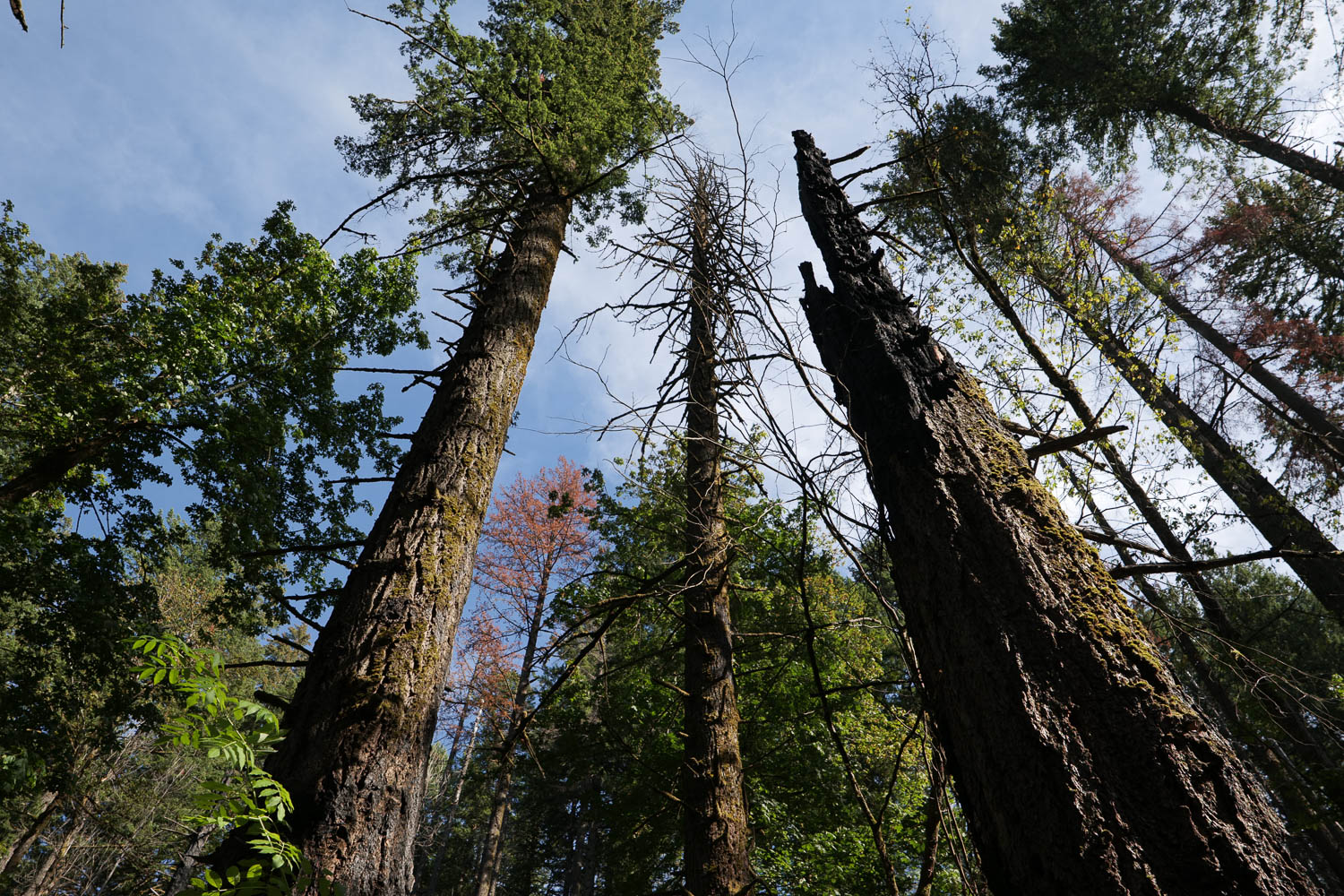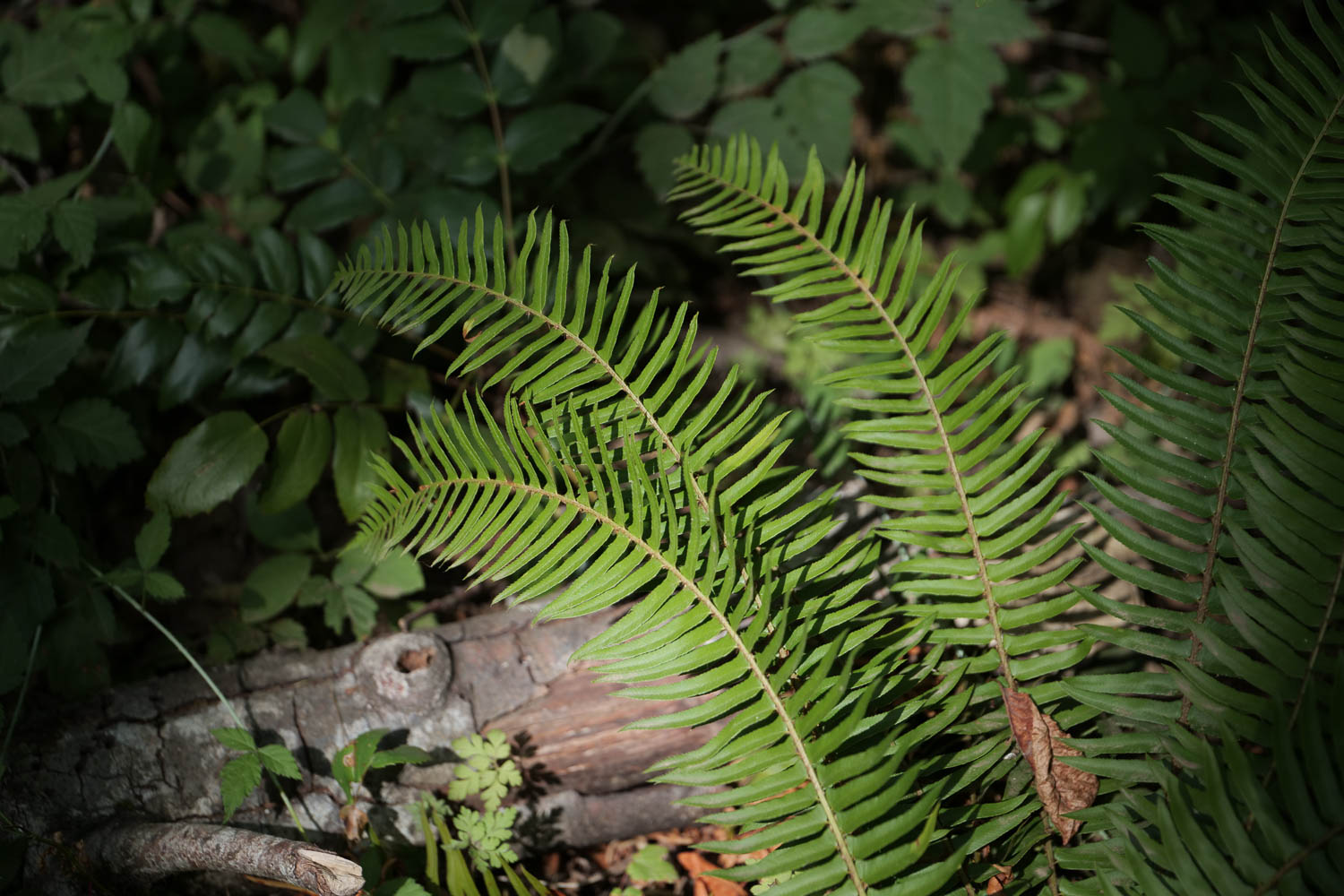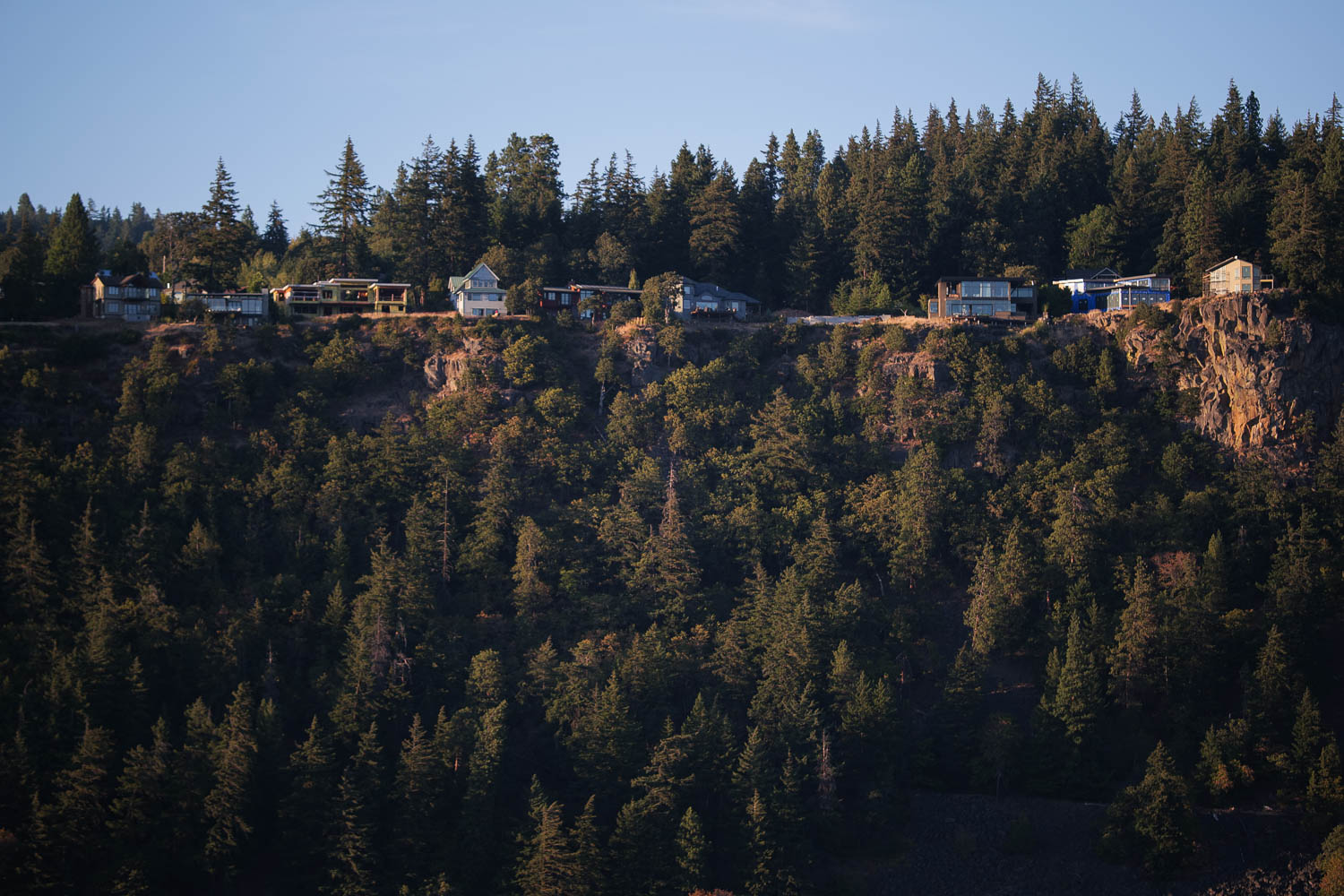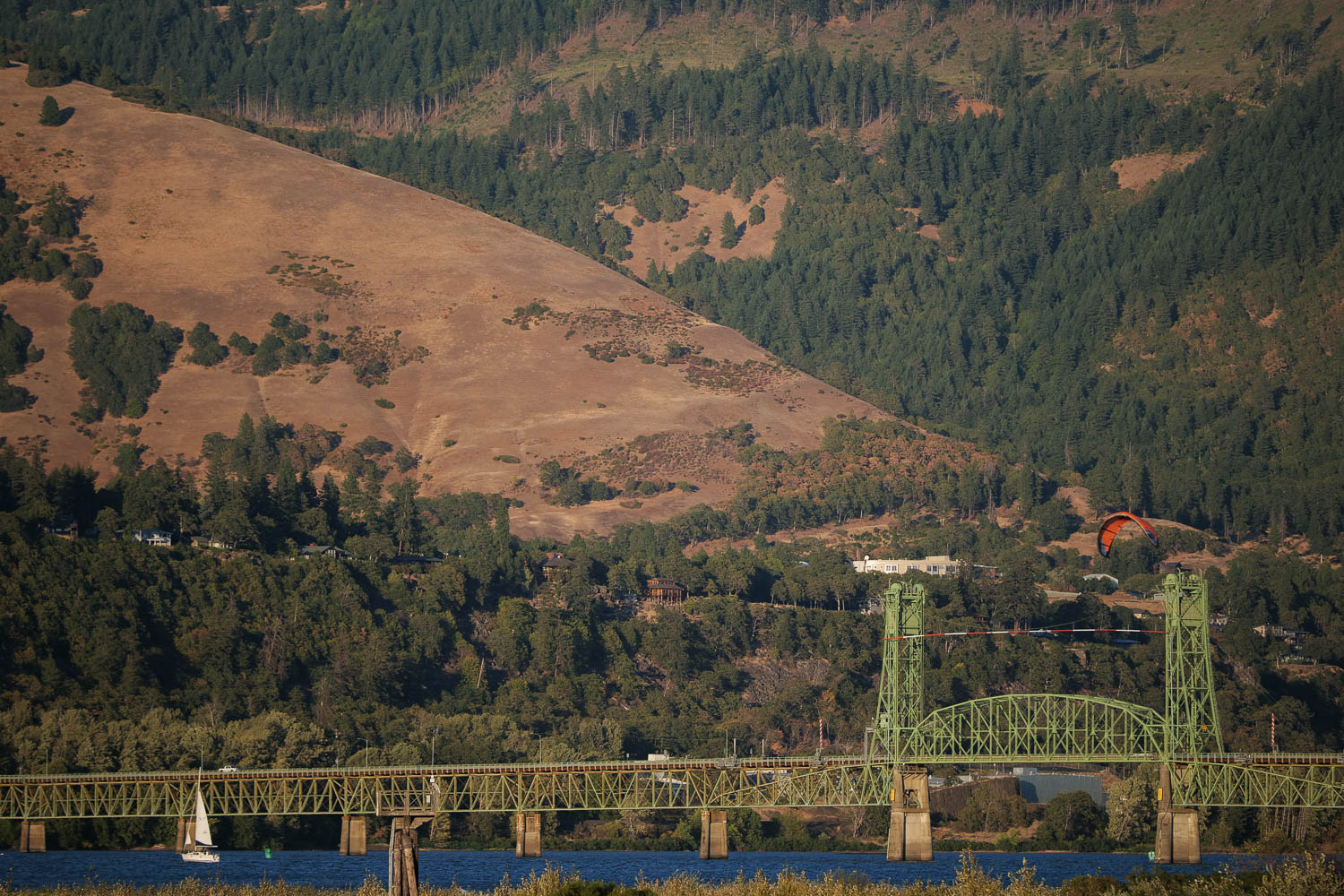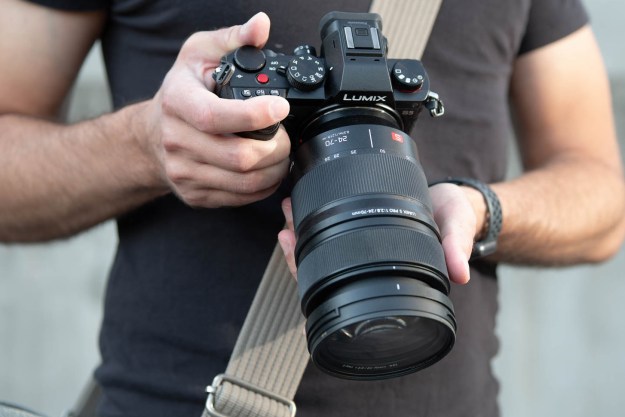
- Excellent design, build quality
- Improved face/eye autofocus
- 96MP high-resolution mode
- Unlimited 4K/30 recording
- 30-minute 4K/60
- Low-resolution EVF
- Autofocus lags behind competition
- Slow continuous shooting
When Panasonic launched the full-frame Lumix S series in 2018, it made one thing very clear: This wasn’t Micro Four Thirds (MFT). Beyond the obvious format change, the S1 weighed well over 2 pounds — eclipsing most DSLRs — with a massive grip, viewfinder bump, and battery. There was no mistaking it.
The downsized Panasonic Lumix S5 flips that notion on its head.
At 1.5 pounds, the S5 isn’t just Panasonic’s lightest full-frame camera, it’s even lighter — barely — than the Lumix GH5, the company’s MFT flagship. It’s not quite the lightest full-frame camera around, but it maintains a fully weather-sealed, magnesium alloy body.
Starting at $2,000, I think the S5 is the camera that many Panasonic fans were hoping for in 2018. It is sized and priced to compete with the Canon EOS R6, Sony A7 III, and Nikon Z 6. The question now is whether it does enough to hold up to that competition in 2020. Panasonic is still playing catch-up in some areas, but the S5 brings a lot to the table that helps it stand out.
Design and handling
Smaller in every dimension than the GH5, the Lumix S5 is a bold move for Panasonic and one that will no doubt have customers worrying about the fate of Micro Four Thirds. Personally, I still think MFT cameras have a place, and even the 3-year-old GH5 retains some advantages over the S5 when it comes to shooting speed and video.
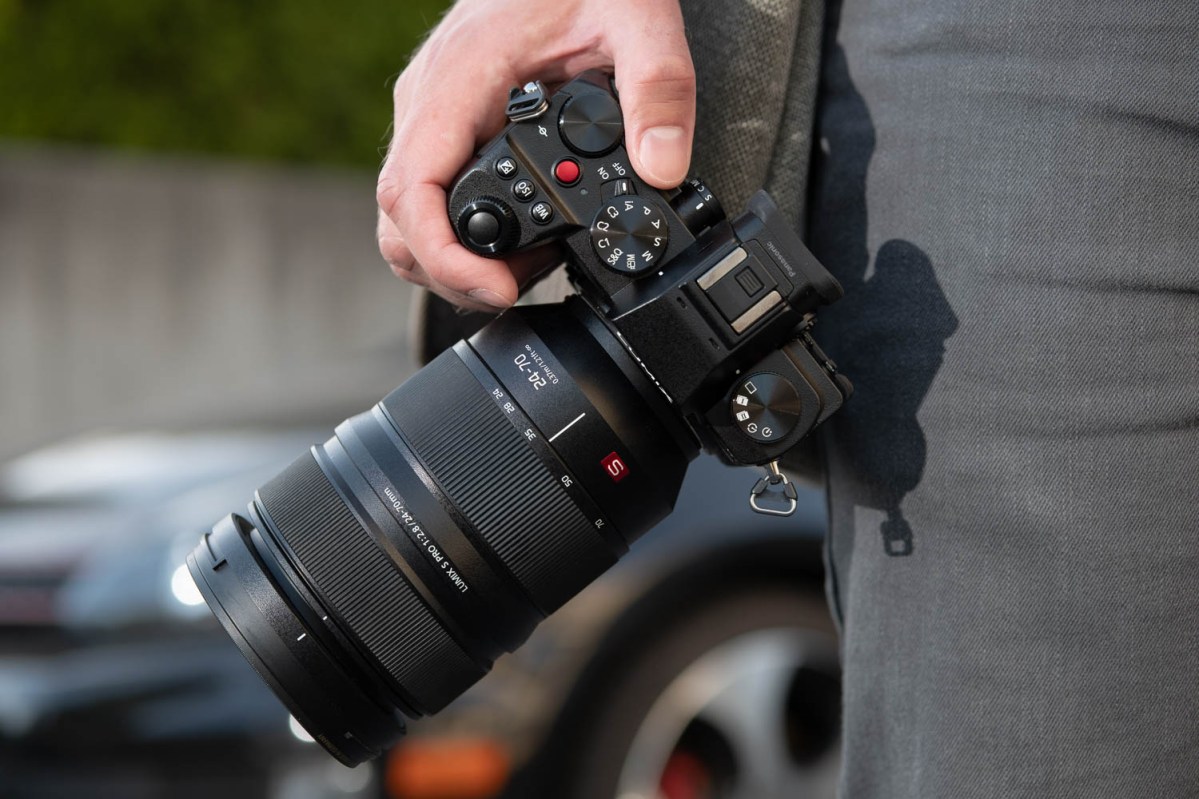
But there’s no doubt the S5 makes for an enticing full-frame upgrade for MFT shooters.
Although smaller, the S5, fortunately, carries over most of the buttons and dials as the S1, giving it a significant amount of direct-access control. It’s down a couple of buttons, but the bigger change is the removal of the top LCD display, where you’ll now find the mode dial (interestingly, the mode dial doesn’t lock, but does at least have strong resistance between positions).
Overall, the camera feels great. Even as someone over 6 feet tall with reasonably large hands, I found the S1 to be slightly too big for me, but the S5 is just about perfect. The weight savings is clear, but it still feels reassuringly dense, a reminder that it is, indeed, a progressional-grade camera.
There’s also a new battery, as the S1’s humongous, 3,050 mAh battery literally could not fit in the S5 (it’s as tall as the camera’s deck height). The new battery is 2,200 mAh, but is rated for 470 photos (1,500 in power save mode), which is actually about 100 more than an S1.
How is this possible? Well, here’s where the bad news comes in.

The majority of that energy savings is likely thanks to the lower-resolution electronic viewfinder (EVF), which has just 2.36 million pixels. To be fair, it’s still an OLED display and looks a lot better than I was expecting it to, but compared to the stunning, 5.7-million-dot EVF in the S1 cameras, it is noticeably inferior. It’s usable enough, but in 2020, low-res viewfinders don’t belong in a modern $2,000 camera. I’m not sure why Panasonic didn’t at least give the S5 a 3.69-million-dot EVF, commonly used by many brands, which still would have left a noticeable spec gap between it and the S1.
Autofocus and shooting speed
If there’s one thing that has been nagging Panasonic cameras for years, it’s a little technology called Depth from Defocus (DFD). This Panasonic-invented autofocus system depends on lens profiles stored in the camera that hold information about each lens’s blur pattern, which allows the camera to determine if an image is front- or back-focused. In other words, it knows which direction to move the lens to achieve focus, reducing hunting and speeding up focus time. It sounds like a complicated process, but this is how Panasonic was able to overcome the usual limitations of contrast-detection autofocus.
It’s also never been enough to keep up with cameras using faster phase-detection focus. Sadly, that’s still the case with the S5 — but that doesn’t mean Panasonic hasn’t made some big strides forward.

For still photography, DFD now works much more reliably for continuous autofocus (AF-C). As Panasonic explained it to me, DFD doesn’t remain active during AF-C in older cameras because it required too much processing power, forcing them to fall back on standard contrast detection. This is still the case with the S1, S1R, and S1H. Most of the complaints with DFD might actually not involve DFD at all, as it turns out.
But those issues with processing appear to be solved. Now, in the S5, DFD stays active constantly in AF-C.
Subject recognition has also seen some pretty dramatic improvements thanks to updated algorithms. The S5 can detect bodies and faces at half the size as the S1 — as small as 2.5% of the frame — and the camera can now recognize a human head separate from the face and body.
Subject recognition has also seen some pretty dramatic improvements thanks to updated algorithms.
This sounds like a well, duh feature at first, but Panasonic told me that head-detection was pivotal in improving the overall reliability of subject-recognition focus. Now, if the camera loses sight of a face, it can continue to stay locked on to the head, whereas the previous system had trouble shifting from face- to body-detection. (And if you’re wondering, yes, the S5’s AF improvements are coming to the S1 cameras later this year via firmware updates.)

In practice, the S5’s autofocus worked well most of the time and I immediately noticed the improvements in AF-C and subject tracking. Sadly, it remains far from perfect. DFD is exceptionally fast, but it occasionally will miss focus for no apparent reason. Also, if you zoom while focusing in AF-C mode, this will throw the camera off, causing a significant focus delay even if the subject hasn’t moved. It’s best to set your zoom before half-pressing the shutter to avoid this, but some fast-paced situations simply won’t allow for that.
Autofocus also can’t keep up in burst shooting. The S5 tops out at 7 frames per second, dropping to 5 with continuous autofocus. So AF-C focus has improved, but you can’t push it very far.
This is one area where the Panasonic GH5 outranks the S5. The Micro Four Thirds camera can shoot up to 12 fps, or 9 with AF-C. I don’t know why AF-C performance is so dramatically different between the S series and G series.
DFD will also leave videographers wanting, at least YouTubers and vloggers who depend on autofocus. As Panasonic explained it to me, DFD can’t operate any faster than the refresh rate of the sensor. In photo mode, Panasonic can turn that up to 480 frames per second. But in video mode, where the sensor is actively recording and reading out pixels, it tops out at just 30 fps, or 60 in APS-C crop modes. That gives DFD a fraction of the samples to work with, and autofocus predictably suffers as a result.
Still, the S5’s video autofocus has been improved over the S1 cameras. I was able to test it side-by-side with an S1H, and the S5 tracked my face and eyes much better as I moved throughout the frame (the S1H was all but unusable). However, it still struggled when I moved out of direct light, or if I got too close to the camera too quickly. Compared to the incredibly good autofocus on Sony cameras, the S5 still doesn’t stack up, despite notable improvements. Fortunately, it has other video features that redeem it, which I’ll get to later.
Image stabilization and high-res shot
The S5 uses a redesigned sensor-shift stabilization system to fit its smaller body. Fortunately, it’s still a good performer, rated for 6.5 stops of shake reduction with a compatible stabilized lens, just half a stop shy of the S1. I don’t think there will be much of a real-world difference. With the 20-60mm kit lens, which is not stabilized, I shot down to 1/6 second with impressively sharp results, but 1/3 second was suddenly in the unusable zone. As always, performance will vary from shot to shot and lens to lens, but don’t expect a seconds-long handheld exposure to come out sharp.
The S1’s 96MP high-resolution mode also made it into the S5, turning the modest 24MP camera into a resolution monster… you simply can’t get more resolution anywhere near this price.
A bit more surprising is that the S1’s 96MP high-resolution mode also made it into the S5, turning the modest 24MP camera into a resolution monster. That makes this the only $2,000 full-frame mirrorless camera with a pixel-shift resolution mode. If you have a tripod and non-moving subjects, you simply can’t get more resolution anywhere near this price. (You can also use it for moving subjects where motion blur is desired, such as waterfalls or light trails, but resolution will only be boosted in non-moving areas of the image — considering the moving areas are blurred, that’s probably not an issue).
Panasonic’s implementation of high-res shot is also more user friendly than Sony’s (which is only available on the A7R series), as it processes the file in-camera and delivers either a RAW or a JPEG. It doesn’t require any special software, and you can review the high-res composite right on the camera’s monitor.
Image quality
Panasonic stressed the S5 uses the exact same sensor as the S1. That means 24 megapixels and no optical low-pass filter. A low-pass filter, like the one used on the S1H, softens the image subtly to combat moiré, a problem I ran into when reviewing the S1 that is still a potential concern with the S5. Personally, I’d rather have a slightly softer image than the risk of moiré, since the difference is minimal, but that’s me. Most manufacturers are opting to forgo low-pass filters these days.
I haven’t been able to view the RAW files yet, but based on my experience with the S1, there should be nothing to complain about. That camera delivered excellent performance all around. One new feature is Live View Composite, which merges the highlights from a sequence of long-exposure frames to build light trails while controlling ambient light on non-moving subjects. It’s great for shooting star trails, and unlike similar modes in other cameras, it can actually save the composite as a RAW, which is pretty neat.
The 20-60mm f/3.5-5.6 kit lens is an interesting optic. I like the focal length, which starts at a much wider angle than most kit lenses, but the variable maximum aperture poses a problem for shooting video. Unless you don’t lock it down at f/5.6 or smaller, your exposure will change as you zoom.
Fortunately, I was also able to test the S5 with Panasonic’s 24-70mm f/2.8 and 70-200mm f/2.8 Lumix S Pro lenses, provided for this review by Lensrentals. While almost laughably large on the S5, theses lenses are gorgeous and reveal what the camera is truly capable of. Thanks to Leica and Sigma, there are plenty of exceptional L-mount lenses to choose from — but avoid the Leicas if you like having money.
Video
As a video camera, the Lumix S5 is like a pickup truck. It’s not flashy or fast, but it works reliably and you can trust it to get the job done.

In a time where overheating complaints have taken center stage, thanks to issues primarily with the Canon EOS R5 but also the video-focused Sony A7S III, Panasonic has taken a conservative approach with the S5, but its features are mostly what’s expected in a $2,000 camera. There’s no 6K, as found on the S1H, let alone 8K or 4K/120. It shoots 4K/60, but not from the full-frame, which is a bit disappointing but no different than the S1H.
On the other hand, you can shoot it in virtually any environment and it won’t shut down on you. Where the S1H has a fan to actively cool the sensor, the smaller S5 does not. Still, Panasonic tested the camera at 104 degrees Fahrenheit — roughly 30 degrees hotter than most manufacturers test their cameras. Based on that testing, 4K/60 and any 10-bit options are limited to 30 minutes. However, assuming you’re not in 104-degree weather, you’ll have no problem starting another clip immediately after that 30-minute cutoff. I tested the camera in direct sunlight on a 70-degree day, and it had no trouble running for a second 30-minute clip in 4K/60.
As for lower framerates at 8 bits, record time is limited only by battery life and memory card capacity — and thanks to dual card slots and support for USB power, you should have no problem getting the S5 to stay awake longer than you can.

But allow me this brief aside: While the camera can record long takes to massive SD cards, the footage will still be split into 4GB chunks because of the FAT32 file system. Really? We haven’t found a solution for this yet? Oh, but we have: The S1H uses the ExFat file system, which allows for much larger files (like, 16 exabytes). Now, I’m not entirely clear on how Microsoft licenses ExFat. I believe it’s a flat fee for digital cameras, but maybe each model line requires a new license, or maybe there are volume limitations, and the S5, being a higher volume camera than the S1H, would make licensing too expensive. This isn’t just a Panasonic problem, but it’s a bit absurd that we’re still relying on FAT32 in the year 2020.
As for video quality, what you get is mostly an S1-level of compression options. That means 10-bit 4:2:2 at 150 megabits per second. You do get both HLG and full V-Log, which is great, but the S1H’s 400Mbps, all-intraframe codec isn’t available. That same codec is also in the GH5, the other area where the MFT flagship bests the S5.
The above video used the S5 at 150Mbps alongside the S1H at 400Mbps, both in V-Log. The main two-shot is the S1H, while the second angle and B roll is the S5. The two cameras edited together fine, but you can definitely push the S1H footage further when it comes to color grading. (This shoot was super last minute and very rough, so please just judge the cameras and, um, not my skills.)
The S5 also lacks other high-end video features found on the S1H. DCI aspect ratios, the option to use shutter angle instead of shutter speed, and some video assist tools, like a vectorscope, are missing.
But here’s the crazy thing. Panasonic has already announced a firmware update, coming later this year, that will bring all of those things to the S5. Even more impressively, while it won’t get the intraframe codec or 6K internal recording, it will get the same 5.9K RAW video output as the S1H. Essentially, that means you can get S1H quality from a camera that’s half the price.
These are all decidedly niche capabilities, but it gives the S5 a unique advantage over its competition. It also makes it the perfect B camera to the S1H — or the perfect alternative for those of us who can’t afford one. An S5 and an Atomos Ninja V recorder would total roughly $2,600, $1,400 less than an S1H by itself.
You can get S1H quality from a camera that’s half the price.
Is Panasonic really OK with this? It just brought RAW output to the S1H earlier this summer, and that is the company’s most expensive full-frame camera. Now it’s announced the same feature is coming to its least expensive full-frame camera. This is huge.
So long as you don’t mind using an external recorder and don’t need reliable continuous autofocus, the S5 is shaping up to be a very impressive, high-end video camera.
Our Take
For some customers, the Panasonic Lumix S5 is what the S1 should have been, and may come across as a bit underwhelming now seeing it 2 years later. Late or not, I think the S5 is exactly the camera Panasonic needed, and it should help expand the L mount to a new demographic.
The camera has grown on me a little more every day that I’ve had it. Even with the imperfect autofocus and low-resolution viewfinder, this is still a proper enthusiast’s camera. It feels great in the hand and the controls are ergonomic and functional. Panasonic didn’t dumb it down, and I really appreciate that. It’s a miniature workhorse that can keep rank with its larger, more expensive siblings.
Speaking of which, I’m not sure what the selling points of the S1 are anymore.
Is there a better alternative?
The $2,000 price range has quickly grown crowded with excellent options. For the still photographer, the Sony A7 III and Nikon Z 6 are valid alternatives, and both offer phase-detection autofocus and faster continuous shooting. However, neither can meet the S5’s video quality. While the Z 6 does offer RAW video output via a paid firmware upgrade, it only does so at a line-skipped 4K resolution.
How long will it last?
This may be a “mini S1,” but it is still built to hold up to professional wear and tear. It should be at least 2 years before a replacement model arrives, but expect it to last many years longer if you don’t feel the urge to constantly upgrade. Panasonic has a spectacular history of supporting cameras for years via firmware updates, as well.
Should you buy it?
Yes. The Lumix S5 is a great hybrid camera at a fair price. However, vloggers, YouTubers, and sports photographers who depend on reliable continuous autofocus should carefully consider the alternatives.
Editors' Recommendations
- Fujifilm’s GFX 50S II is the cheapest medium-format camera ever
- Smaller and cheaper, the full-frame Lumix S5 is exactly what Panasonic needed
- The Panasonic Lumix S5: Everything we know
- The Nikon Z 5 doubles down on SD card slots despite its entry-level price
- After years of waiting, Sony A7S III may arrive this summer


